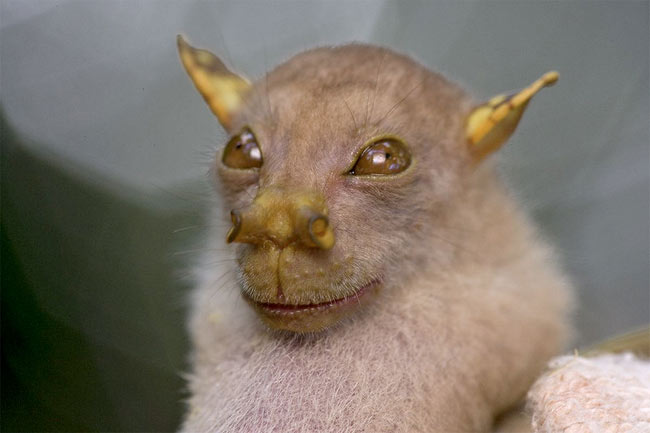Adorable Bat, I Am!

A fruit bat documented by the researchers who announced the discovery of 200 new species in the forests of Papua New Guinea this week is making the rounds on the Internet for an unusual reason.
Looks like Yoda, he does.
The tube-nosed fruit bat's pointy ears and wise eyes remind some of the diminutive-yet-powerful Jedi master from George Lucas' "Star Wars" movies. Perhaps that's fitting, because the small bat likely plays an important role in dispersing seeds in the forest, according to Conservation International, which organized the forest expeditions.
The bat's back story is as mysterious as Yoda's. The animal had been seen before the 2009 expeditions, but scientists know little about it. They know the bat is part of the genus Nyctimene, but the species is as yet unnamed.
Though they can't be sure about the Yoda bat, researchers have discovered a curious behavior in other fruit bats: They enjoy fellatio, a finding which netted its discoverers a 2010 Ig Nobel Prize.
While plenty of news outlets have jumped on the Yoda-bat bandwagon, not everyone is buying the bat as Yoda's look-alike.
"That bat looks nothing like Yoda," wrote a blogger at Geekologie.com, who added, "I've seen cats that look more like Yoda."
Sign up for the Live Science daily newsletter now
Get the world’s most fascinating discoveries delivered straight to your inbox.
Other possible bat look-alikes suggested by commenters on that post include Falkor, the dragon from "The Neverending Story" and Splinter, the anthropomorphic rat from "Teenage Mutant Ninja Turtles."
Anyone else see the resemblance?
- Gallery: Wacky, New Rain Forest Species
- Rain Forest's Exotic Bounty: Tiny Frogs, Pink-Eyed Katydids
- 10 Species You Can Kiss Goodbye

Stephanie Pappas is a contributing writer for Live Science, covering topics ranging from geoscience to archaeology to the human brain and behavior. She was previously a senior writer for Live Science but is now a freelancer based in Denver, Colorado, and regularly contributes to Scientific American and The Monitor, the monthly magazine of the American Psychological Association. Stephanie received a bachelor's degree in psychology from the University of South Carolina and a graduate certificate in science communication from the University of California, Santa Cruz.










